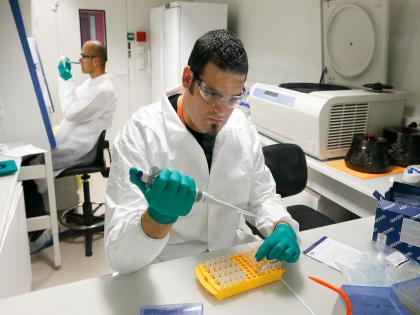Researchers use AI to create first 100-billion-star Milky Way simulation
By ANI | Updated: November 17, 2025 15:25 IST2025-11-17T15:20:41+5:302025-11-17T15:25:03+5:30
Washington DC [US], November 17 : Researchers combined deep learning with high-resolution physics to create the first Milky Way ...

Researchers use AI to create first 100-billion-star Milky Way simulation
Washington DC [US], November 17 : Researchers combined deep learning with high-resolution physics to create the first Milky Way model that tracks over 100 billion stars individually.
Researchers led by Keiya Hirashima at the RIKEN Centre for Interdisciplinary Theoretical and Mathematical Sciences (iTHEMS) in Japan, working with partners from the University of Tokyo and Universitat de Barcelona in Spain, have created the first Milky Way simulation capable of tracking more than 100 billion individual stars across 10 thousand years of evolution.
Their AI learned how gas behaves after supernovae, removing one of the biggest computational bottlenecks in galactic modelling. The result is a simulation hundreds of times faster than current methods.
The team achieved this milestone by pairing artificial intelligence (AI) with advanced numerical simulation techniques.
Their model includes 100 times more stars than the most sophisticated earlier simulations and was generated more than 100 times faster.
The work, presented at the international supercomputing conference SC '25, marks a major step forward for astrophysics, high-performance computing, and AI-assisted modelling.
The same strategy could also be applied to large-scale Earth system studies, including climate and weather research.
Scientists have not previously been able to model a galaxy as large as the Milky Way while maintaining fine detail at the level of single stars.
Current cutting-edge simulations can represent systems with the equivalent mass of about one billion suns, far below the more than 100 billion stars that make up the Milky Way.
As a result, the smallest "particle" in those models usually represents a group of roughly 100 stars, which averages away the behaviour of individual stars and limits the accuracy of small-scale processes.
The challenge is tied to the interval between computational steps: to capture rapid events such as supernova evolution, the simulation must advance in very small time increments.
Shrinking the timestep means dramatically greater computational effort. Even with today's best physics-based models, simulating the Milky Way star by star would require about 315 hours for every 1 million years of galactic evolution.
At that rate, generating 1 billion years of activity would take over 36 years of real time. Simply adding more supercomputer cores is not a practical solution, as energy use becomes excessive and efficiency drops as more cores are added.
A New Deep Learning Approach
To overcome these barriers, Hirashima and his team designed a method that blends a deep learning surrogate model with standard physical simulations.
The surrogate was trained using high-resolution supernova simulations and learned to predict how gas spreads during the 100,000 years following a supernova explosion without requiring additional resources from the main simulation.
This AI component allowed the researchers to capture the galaxy's overall behaviour while still modelling small-scale events, including the fine details of individual supernovae.
The team validated the approach by comparing its results against large-scale runs on RIKEN's Fugaku supercomputer and The University of Tokyo's Miyabi Supercomputer System.
This hybrid AI approach could reshape many areas of computational science that require linking small-scale physics with large-scale behaviour.
Fields such as meteorology, oceanography, and climate modelling face similar challenges and could benefit from tools that accelerate complex, multi-scale simulations.
"I believe that integrating AI with high-performance computing marks a fundamental shift in how we tackle multi-scale, multi-physics problems across the computational sciences," says Hirashima.
"This achievement also shows that AI-accelerated simulations can move beyond pattern recognition to become a genuine tool for scientific discovery helping us trace how the elements that formed life itself emerged within our galaxy," added Hirashima.
Disclaimer: This post has been auto-published from an agency feed without any modifications to the text and has not been reviewed by an editor
Open in app